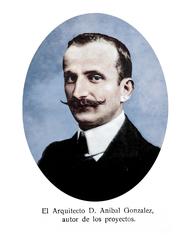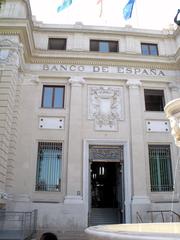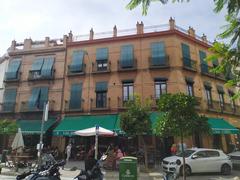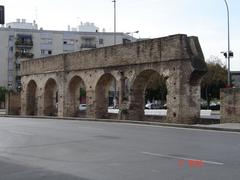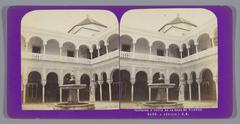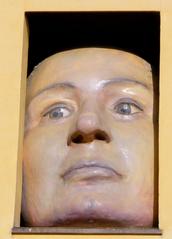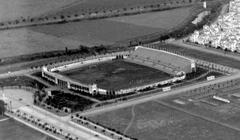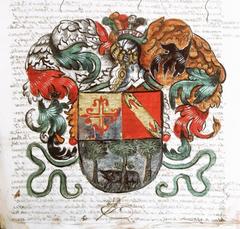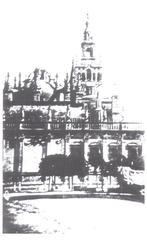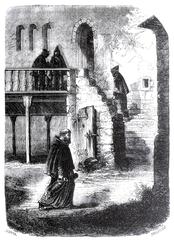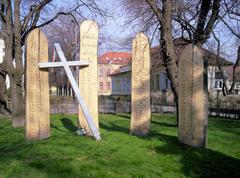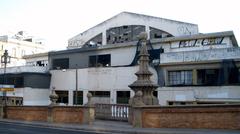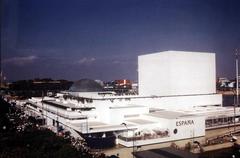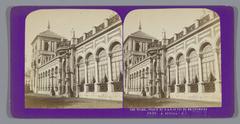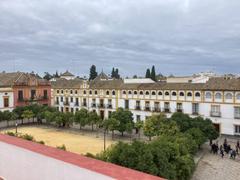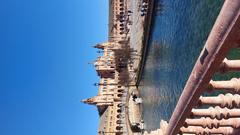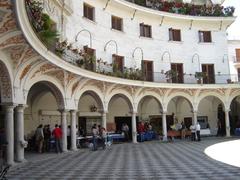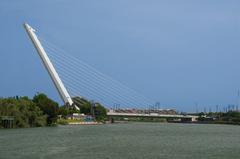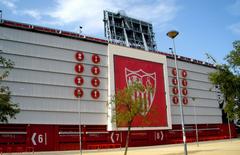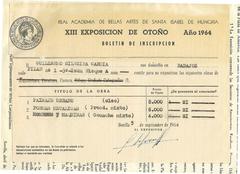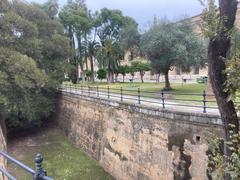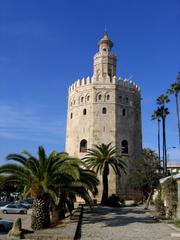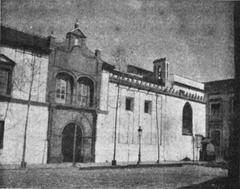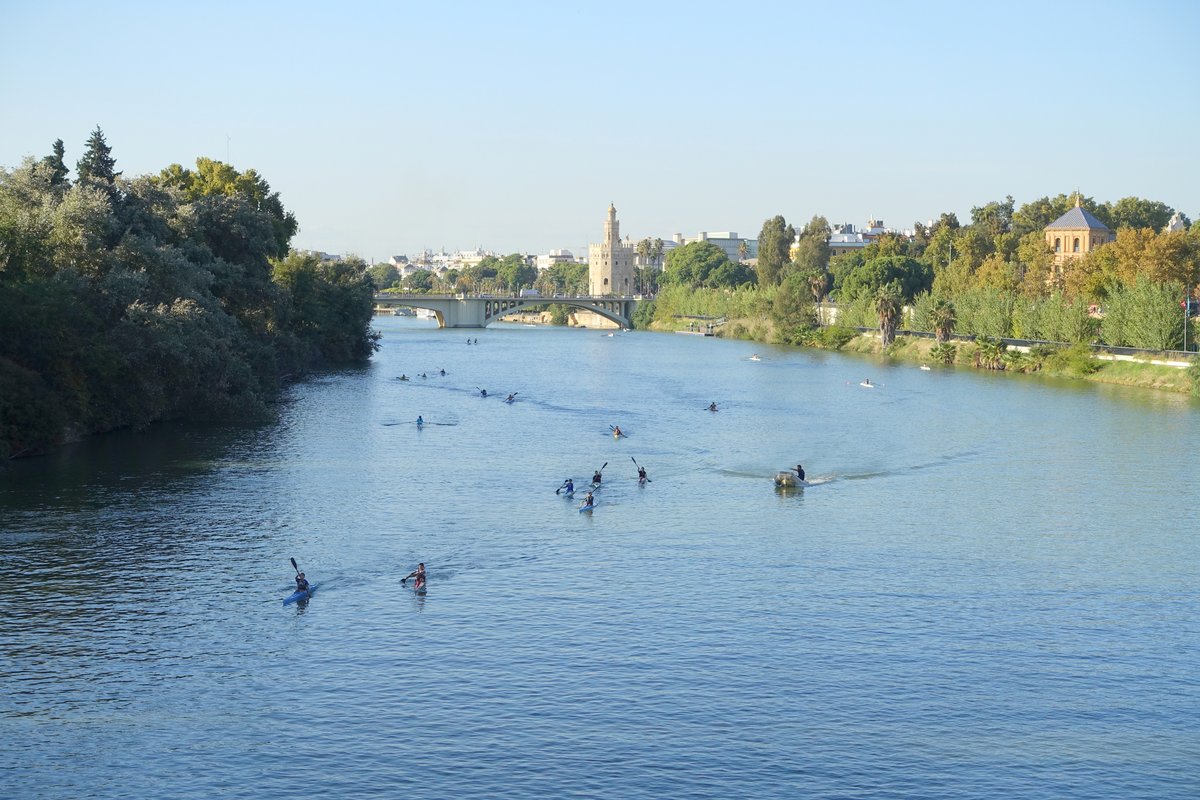
Visiting Puente de San Telmo in Seville: Hours, Tickets, and Tips
Date: 18/07/2024
Introduction to Puente de San Telmo
The Puente de San Telmo, an architectural marvel located in Seville, Spain, serves as a vital link between the city’s historic center and the vibrant southern districts. Although relatively modern, having been inaugurated in 1991, the bridge’s roots dig deep into Seville’s rich history, echoing the city’s evolution from a bustling port in the Spanish Golden Age to a contemporary urban hub. Designed by the renowned Spanish engineer Juan José Arenas de Pablo and architect José Luis Manzanares Japón, this cable-stayed bridge stands as a testament to the innovative spirit that characterizes Seville. The bridge’s historical, architectural, and cultural significance makes it a must-visit landmark for anyone exploring the city (Seville Tourism).
Before the Puente de San Telmo, the Guadalquivir River posed a significant challenge for Seville’s inhabitants and traders. Early crossings relied on precarious boat bridges susceptible to the river’s whims. The construction of the Puente de Isabel II in 1845 marked a significant step forward, but by the mid-20th century, Seville’s rapid growth necessitated a new solution. The Puente de San Telmo was born out of this need, offering a modern, efficient, and aesthetically pleasing way to traverse the river (History of Seville Bridges). This bridge not only symbolizes Seville’s progress but also serves as a cultural hub, providing a picturesque setting for gatherings, celebrations, and daily commutes (Seville Cultural Sites).
Table of Contents
- [A Bridge Through Time - The Historical Background of Puente de San Telmo](#a-bridge-through-time---the-historical-background-of-puente-de-san-telmoa-bridge-through-time---the-historical-background-of-puente-de-san-telmo)
- [Visitor Information - Tickets, Visiting Hours, and Travel Tips](#visitor-information---tickets-visiting-hours-and-travel-tipsvisitor-information---tickets-visiting-hours-and-travel-tips)
- [A Bridge for the Future - San Telmo’s Legacy](#a-bridge-for-the-future---san-telmos-legacya-bridge-for-the-future---san-telmos-legacy)
- [Frequently Asked Questions (FAQ)](#frequently-asked-questions-faqfrequently-asked-questions-faq)
- [References and Further Reading](#references-and-further-readingreferences-and-further-reading)
A Bridge Through Time - The Historical Background of Puente de San Telmo
The Puente de San Telmo, while a relatively modern addition to Seville’s cityscape, carries with it echoes of a rich and layered past. Its story intertwines with the evolution of Seville, reflecting the city’s growth, ambitions, and changing relationship with the Guadalquivir River.
Early Crossings and the Power of the Guadalquivir
Long before the Puente de San Telmo was even a concept, the Guadalquivir River held immense significance for Seville. Serving as a vital artery for trade and transportation, the river dictated the city’s development and prosperity. However, the river also presented a challenge—the need for a reliable crossing.
In Seville’s early history, simple boat bridges served as the primary means of traversing the Guadalquivir. These rudimentary structures, consisting of boats lashed together and topped with planks, were functional but precarious. They were susceptible to the river’s currents and tides, often becoming impassable during periods of high water.
The Quest for a Permanent Connection
The limitations of the boat bridges became increasingly evident as Seville grew in importance. The city’s role as a major port during the Spanish Golden Age, fueled by trade with the Americas, demanded a more robust and permanent river crossing.
Various proposals for a permanent bridge surfaced over the centuries, but financial and logistical hurdles consistently delayed their realization. The technical challenges of bridging the wide Guadalquivir, coupled with the soft riverbed, made the endeavor both costly and complex.
The Arrival of the Iron Age - A New Era for Bridge Building
The 19th century ushered in a period of significant technological advancement, particularly in the field of iron production. This development had a profound impact on bridge building, making it possible to construct larger and more durable structures than ever before. Cities across Europe, eager to embrace progress and improve infrastructure, embarked on ambitious bridge projects.
Seville, too, recognized the potential of this new technology. The city’s leaders saw an opportunity to finally realize the long-held dream of a permanent bridge across the Guadalquivir. This ambition coincided with the rise of industrialization and a growing desire to connect Seville more effectively with the southern districts, particularly the burgeoning industrial area of Los Remedios.
The Birth of the Puente de Isabel II - A Precursor to San Telmo
In 1845, construction began on the Puente de Isabel II, Seville’s first permanent bridge and a testament to the transformative power of iron. Designed by French engineer Ferdinand Bernadet, the bridge featured three elegant arches and was hailed as a marvel of modern engineering.
The Puente de Isabel II, often referred to as the “Puente de Triana” due to its proximity to the Triana neighborhood, significantly impacted Seville. It facilitated trade, improved transportation, and fostered urban development on both sides of the river. However, as the 20th century progressed, the bridge struggled to accommodate the city’s ever-increasing traffic and evolving needs.
A City on the Move - The Need for a New Bridge
By the mid-20th century, Seville was experiencing a period of rapid growth and modernization. The city’s population was expanding, and the rise of the automobile led to a surge in traffic congestion. The Puente de Isabel II, once a symbol of progress, was struggling to cope with the demands of a changing city.
Recognizing the need for a new river crossing to alleviate traffic and improve connectivity, city planners began exploring options for a second bridge. The location chosen for this new bridge was near the Palace of San Telmo, a historic building that once housed a nautical school and later served as the seat of the regional government of Andalusia.
The Puente de San Telmo Takes Shape - A Modern Bridge for a Modern City
The Puente de San Telmo, inaugurated in 1991, marked a significant milestone in Seville’s urban development. Designed by renowned Spanish engineer Juan José Arenas de Pablo and architect José Luis Manzanares Japón, the bridge was conceived as a modern solution to the city’s growing transportation needs.
Unlike its predecessor, the Puente de San Telmo features a sleek, cable-stayed design. This innovative approach, with its distinctive pylons and graceful cables, allows for a longer span with fewer supports, minimizing the bridge’s impact on the river’s flow and preserving the views of the city.
Visitor Information - Tickets, Visiting Hours, and Travel Tips
Visiting Hours and Accessibility
The Puente de San Telmo is accessible at all times as it is a public bridge. There are no specific visiting hours, allowing visitors to enjoy its beauty both day and night.
Tickets
There is no fee to walk or drive across the Puente de San Telmo, making it a freely accessible attraction for all visitors.
Travel Tips
- Best Time to Visit: The bridge is a fantastic spot for both sunrise and sunset views. Early morning or late evening visits are recommended for the best lighting and fewer crowds.
- Nearby Attractions: The bridge is close to several key attractions, including the Palace of San Telmo and the Seville Cathedral. Combining these visits can make for an enriching day of sightseeing.
- Photography Spots: For photographers, the riverbanks on either side of the bridge offer excellent vantage points for capturing its stunning architecture.
A Bridge for the Future - San Telmo’s Legacy
The Puente de San Telmo stands as a testament to Seville’s ability to embrace progress while honoring its past. It serves as a vital transportation link, connecting the historic city center with the southern districts and facilitating the flow of people and goods. Moreover, the bridge has become a beloved landmark, its distinctive silhouette adding a modern flourish to Seville’s skyline.
As Seville continues to evolve, the Puente de San Telmo will undoubtedly play a crucial role in shaping the city’s future. It stands as a symbol of innovation, connecting Seville’s rich history with the promise of a dynamic and interconnected future.
Frequently Asked Questions (FAQ)
What are the visiting hours for Puente de San Telmo? The Puente de San Telmo is accessible 24/7 as it is a public bridge.
Do I need a ticket to visit Puente de San Telmo? No, there is no fee to walk or drive across the Puente de San Telmo.
What is the best time to visit Puente de San Telmo? Early mornings and late evenings are ideal for visiting, especially for sunrise and sunset views.
Are there any nearby attractions to Puente de San Telmo? Yes, nearby attractions include the Palace of San Telmo and the Seville Cathedral.
Summary and Final Thoughts
The Puente de San Telmo is more than just a bridge; it is a symbol of Seville’s enduring spirit and innovation. Its construction reflects a period of significant urban development and modernization, aligning with Seville’s preparations for the 1992 World’s Fair. Today, the bridge is a vital artery that supports the city’s transportation needs while offering a stunning architectural landmark that both locals and tourists can appreciate. Its design, which draws inspiration from Seville’s maritime heritage, combines aesthetic elegance with engineering prowess, making it a significant point of interest for architecture enthusiasts and historians alike (Architectural Digest).
As Seville continues to grow and evolve, the Puente de San Telmo remains a constant reminder of the city’s ability to harmonize its rich historical past with modern advancements. Whether you’re walking across its pedestrian-friendly walkways or simply admiring its structure from the riverbanks, the bridge offers a unique perspective on Seville’s dynamic history and cultural vibrancy. It stands not just as a functional piece of infrastructure but as a beloved landmark that captures the essence of Seville’s journey through time (Seville Urban Development).
References and Further Reading
- Seville Tourism. (n.d.). Puente de San Telmo. Retrieved from Seville Tourism
- History of Seville Bridges. (n.d.). Retrieved from History of Seville Bridges
- Seville Cultural Sites. (n.d.). Retrieved from Seville Cultural Sites
- Architectural Digest. (n.d.). Puente de San Telmo. Retrieved from Architectural Digest
- Seville Urban Development. (n.d.). Retrieved from Urban Seville


